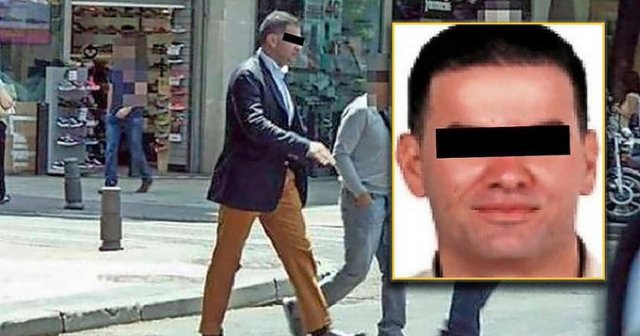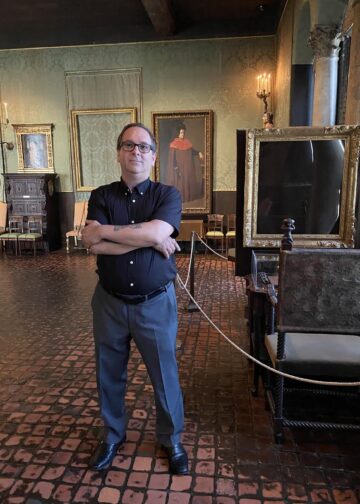As any movie lover knows, Dr. No was a villain in the classic James Bond movie who owned an island and possessed a stolen Goya painting. The artworld first adopted this figure to refer to a nefarious billionaire that commissions or buys stolen artworks, but later, scores of art experts started to insist that such a figure absolutely does not exist.
I do not want to contradict them and assert that a Dr. No type who sends thieves “wish lists” of paintings they desire for their private collections does exist, but I do claim that a less extravagant version of this character who buys stolen art is sometimes a reality.
It would be a mistake to believe that despicable billionaires or millionaires–or even organized crime (OC) bosses– with aesthetic taste do not exist. At the very least there are those that see the value in holding masterpieces as negotiating chips with authorities if they are arrested.
It is indeed a possibility that a Russian oligarch who can buy his own island could also possess a stolen masterpiece; or that a camorra crime boss in Naples or a gangster hiding in Dubai has a passion for Dutch artists.
In 2016, Italian Carabinieri raided the house of Camorra Boss Raffaele Imperiale’s mother in Castellammare di Stabia, Italy and recovered two stolen Van Gogh paintings. The paintings were stolen with ease by a Dutch burglar named Octave Durham in Amsterdam from the Van Gogh Museum in 2002. Amazingly, Durham managed to sell the paintings as easily as he burgled them.

Durham had connections with Dutch and Irish OC, specifically the notorious Kinahans who had major interests in Amsterdam (the suspected boss Daniel Kinahan is currently living in Dubai and holds a Dubai resident’s card) as well as Raffaele Imperiale who owned a café in Amsterdam and worked closely with these groups. Imperiale stated he acquired the stolen paintings purely out of his love of art, but obviously he knew they could be useful if ever he were arrested.
Imperiale was arrested in Dubai in 2021, has been extradited to Italy and has agreed to cooperate with Italian authorities as a ‘pentito’ (a protected informant). Only a matter of time separates us from learning if this cooperating witness reveals any earth shaking news about other stolen artworks that he or his criminal cohorts hid away as get out of jail free cards.
Recently, Sicilian Mafia boss Matteo Messina Denaro was arrested in Palermo. The arrest gives hope for future operations by Italian law enforcement and subsequent discoveries. The new Italian government has pledged to aggressively fight organized crime, which has an interest in cultural property crimes as first made obvious by the 1969 theft of Caravaggio’s Nativity from a church in Palermo, and more recently reinforced by the Van Gogh’s confiscated in Camorra territory.

The Association for Research into Crimes against Art (ARCA) blog reported that a ‘pizzino’– a codified message–of Denaro’s was intercepted that read ”with trafficking of works of art we support our family.” Whether this was literal, or it was code is unknown, but OC’s interest in cultural crimes cannot be denied.
The mafia bosses responsible for the 1969 theft of the Caravaggio and Camorra boss Imperiale and his cohorts all represent a type of Dr. No. They are wealthy men with tentacles that reach into the underworld who may wish to purchase stolen works of art.
In March 1990, robbers stole $500 million worth of art from the Gardner Museum in Boston. Among the works stolen were three Rembrandt’s, including Storm on the Sea of Galilee, and The Concert by Vermeer which alone is worth at least $300 million on the legitimate market. Many believe these works are still in the Boston area, but in 2013 Richard DesLauriers, Special Agent in charge of the Boston FBI Office, stated that he believes two Rembrandts ended up in Philadelphia in the hands of the Philly mob.
Most authorities like to imagine they are hidden in an attic or in a hole under a shed and not in the hands of a collector. But someone has them and it cannot be discounted that one of the involved parties got the last laugh and managed to sell the Concert or some of the other works to an unscrupulous collector in a foreign city like Dubai.
If this is the case, then it might be there for a long time. Short of an arrest and ensuing negotiations to reduce charges, it is most probable that the possessor would surely not be happy with only the $10 million reward that the museum is offering considering what the painting is worth.
So, I ask: Is there a doctor in the house?











